#punjabi religious songs
Explore tagged Tumblr posts
Text

ZAKIR SETHUPATHI - the poet

Stats --
FULL NAME: Zakir Aamir Sethupathi
AGE & DATE OF BIRTH: 28 -- January 8th
OCCUPATION: rapper, translator, interpreter
ASSOCIATE OF DEAD HAND
GENDER & PRONOUNS: cis-man, he/him
SEXUALITY: Bisexual, Biromantic
LANGUAGES: mother tongue: Hindi, Urdu fluent: Arabic, Spanish, English, Russian, Punjabi, Gujarati conversational: Japanese, Cantonese learning: Portuguese, Mandarin, Bahasa Malay
RELATIONSHIP STATUS: Single ( crushing on Anchali )
FC: arpan kumar chandel aka King

Biography --
Zakir was sixteen when he moved from New Delhi to New York City hoping to find a richer more full-filling life there. He hoped to become a famous rapper. He grew up the oldest son of a Muslim and Hindu couple, with little prospect in life other than continue his father's business. His uncle - a friend of his father rather than his actual uncle - told him stories of America, of New York City, and the American Dream.
He got into crime because he needed funds and connections to gain his fame. He's known for making songs in which he fluently meshes languages and meanings together, rapping under the alias Baagee. However, a lot of his time is spent translating for Dead Hand or using his understanding of languages to decipher coded messages.
He's been releasing songs steadily during the past five years, and has been an official associate of Dead Hand for three years.
Timeline

Headcanons --
He's a polyglot; he speaks multiple languages and easily picks up new ones. Currently he's learning Portuguese, Mandarin & Bahasa Malay. He's however always interested in learning more.
He addresses anyone his age with either habibi/habibti ( ‘my dear’ or 'my love’ in Arabic ) or bhai/bhen ( 'brother’/'sister' in Hindi / Indic language ), and anyone older than him as auntie or uncle. Does this consistently and with respect.
Despite his mastery of languages, Zakir still has a distinct accent when speaking in Russian, English or Spanish.
He produces his own music.
He's a romantic, friendly and charming, and a little afraid of violence. Will always portray the role of a diplomat in a conflict.
Zakir was raised in a Muslim and Hindu household, though neither him nor his siblings got much of a choice which religion they wanted to follow. As a result he still follows a lot of rules from Islam and participates in all its religious days, including Ramadan.
He doesn't drink or smoke - though he on occasion uses the drugs available at El Anhelo, and has his way to say why those aren't as bad.
He has an augmentation in his eyes, installed just before he moved to the United States by a street engineer. Because it was a prototype, he's had to get it checked out several times. It essentially works as a video camera: he can zoom in, zoom out, rewind, slow down, and speed up. As well as choose to save certain moments to his phone to view later. Because his eyes are more sensitive now, he wears sunglasses or tinted glasses almost all the time.
wanted and established connection can be found here.

Slang --
Some slang Zakir might use and its meaning:
Yaar: friend/buddy/dude, addressing someone.
Arre yaar: addressing someone while expressing disappointment, surprise, or frustration.
Mashallah: 'God has willed it'
Inshallah: 'if God wills'
Wallah: 'I swear', said very often, presume Zakir never lies when he says this, as it's a sin.
Yallah/Chalo/Vamonos: Let's go!
Alhamdulillah: 'Praise to God'
Subhanallah: 'Glory to God'
Māśūqa: sweetheart, used for Anchali
Chai: Zakir never says tea
Jhakaas: Awesome!
Mast: excellent or fantastic
Bhai __ hai?: he uses this in restaurants mostly when he wants something quickly.
Theek hai: ok or it's okay
4 notes
·
View notes
Text
ARC Review of Arya Khanna's Bollywood Moment by Arushi Avachat

Rating: 4/5 Heat Level: 1/5 Publication Date: January 9th
Premise:
Arya Khanna's senior year of high school is shaping up to be busier than she expected: she's helping plan her sister's big wedding, playing mediator between her sister and mother, working a part-time job, and is student council vice president, meaning she has to learn to work with the president and her rival, Dean Merriweather.
My review:
I like to dip my toe into YA occasionally because I love to support writers of color and I was especially excited because Arushi Avachat is a fellow Indian-American who wrote a loving portrayal of an Indian-American heroine and her family in this book. Arya and her older sister Alina's relationship is the focal point of the story. Alina is getting married and Arya is her chief source of support because their mother is somewhat estranged from Alina after Alina dropped out of college and decided to take a non-traditional career path. I was reminded of Nisha Sharma's author's note in Tastes Like Shakkar where she wrote about the concept of "family managers", namely when children feel like their value to the family is conflated with the help they provide. This fits Arya to a tee: she is trying to keep the peace between her mother and sister and take care of her mother all while feeling like this is her duty, a carryover from when Alina was at college and living abroad. And that feeling hasn't entirely gone away, even with Alina living at home once again, and it only gets stronger until Arya confronts it head-on at the climax of the story.
I liked how Arushi portrayed Indian-American culture in the book; it's not a monolith, as shown in the way she contrasts her family's Punjabi customs with Alina's fiancé Nikhil's Marathi customs. You also get a good sense of everyday desi culture, like the food we eat, being bilingual, the love for Bollywood films and songs, and religious observances like festivals and pujas. Plus, there's plenty of insight into the sheer magnitude of planning that goes into desi weddings.
Speaking of Bollywood, I thought the book's structure was cute— it was broken into acts much like Arya's beloved Bollywood films, complete with a soundtrack at the end.
I think my one note regarding the familial aspect is that I did not feel Arya's conflict with her mom was entirely resolved. Obviously her mom's depression isn't something I expected to be magically cured by the end of the book, and to be fair to Arya, she does learn to be more empathetic towards her mom during the course of the story, however, her mother does not communicate with Arya much better by the end of the book than she did in the beginning. I feel like this was a missed opportunity to hear the point of view of a woman who got married and moved abroad at a fairly young age, barely has any physical contact with her loved ones who still live in India, and suffers from a mental illness that is still stigmatized within the community.
Regarding the romance between Arya and Dean, I do think it was very much a secondary plot. The book's blurb does a good job of putting into perspective what the main focus of the book is, namely, Arya's relationship with Alina, Alina's upcoming wedding, and Arya's family. What we do see of Dean and Arya is cute, if fairly low conflict— they're initially rivals who slowly learn to communicate better until they finally admit their feelings for one another near the end. I feel like even the subplot concerning Arya's evolving friendship with Lisa was given equal, if greater importance than the romance itself.
Overall, I'd recommend this book to anyone looking for a cute young adult story about the complexities of family relationships and friendships that evolve as we grow older, and first brushes with romance.
Thank you to St. Martin's Press and NetGalley for the ARC in exchange for my review.
#netgalley#arc#arc review#arushi avachat#St. Martin's Press#romance novels#YA romance#young adult romance
2 notes
·
View notes
Text
Haryana was part of the Kuru Kingdom during the Vedic era during 1200 BCE.
Haryana has been inhabited since the pre-historic period. Haryana was part of the Indus Valley civilization during the Bronze Age period. The ancient sites of Rakhigarhi and Bhirrana are some of the oldest Indus Valley civilization sites.(5) Haryana was part of the Kuru Kingdom during the Vedic era during 1200 BCE.(6)(7)(8) The area now Haryana has been ruled by some of the major empires of India. The Pushyabhuti dynasty ruled the region in the 7th century, with its capital at Thanesar. Harsha was a prominent king of the dynasty.(9) The Tomara dynasty ruled the region from 8th to 12th century. The Chahamanas of Shakambhari defeated them in the 12th century.(10)
Harsha Ka Tila mound, ruins from the reign of 7th century ruler Harsha.
Lal kot built by Anangpal Tomar in 1052
Portrait of Hem Chandra Vikramaditya, who fought and won across North India from the Punjab to Bengal, winning 22 straight battles.(11)
In 1192, Chahamanas were defeated by Ghurids in Second Battle of Tarain.(10) In 1398, Timur attacked and sacked the cities of Sirsa, Fatehabad, Sunam, Kaithal and Panipat.(12)(13) In the First Battle of Panipat (1526), Babur defeated the Lodis. Hem Chandra Vikramaditya claimed royal status after defeating Akbar's Mughal forces on 7 October 1556 in the Battle of Delhi. In the Second Battle of Panipat (1556), Akbar defeated the local Haryanvi Hindu Emperor of Delhi, who belonged to Rewari. Hem Chandra Vikramaditya had won 22 battles across India from Punjab to Bengal, defeating the Mughals and Afghans. Hemu had defeated Akbar's forces twice at Agra and the Battle of Delhi in 1556 to become the last Hindu Emperor of India with a formal coronation at Purana Quila in Delhi on 7 October 1556. In the Third Battle of Panipat (1761), the Afghan king Ahmad Shah Abdali defeated the Marathas.(14)
In 1966, the Punjab Reorganisation Act (1966) came into effect, resulting in the creation of the state of Haryana on 1 November 1966.(15)
Distribution
Haryanvis within Haryana
See also: Demography of Haryana
The main communities in Haryana are Gujjar, Jat, Brahmin, Agarwal, Ahir, Chamar, Nai, Ror,Rajput, Saini, Kumhar, Bishnoi etc.(16) Punjabi khatri and Sindhi refugees who migrated from Pakistan had settled in large numbers in Haryana and delhi.
Haryanvi diaspora overseas
(icon)
This section needs expansion. You can help by adding to it. (July 2021)
See also: Indian disaspora overseas
There is increasingly large diaspora of Haryanvis in Australia, Canada, Singapore, New Zealand, Saudi Arabia, UAE, UK, USA, etc.
In Australia, the community lives mainly in Sydney and Melbourne, has set up Association of Haryanvis in Australia (AHA) which organise events.(17)
In Singapore, the community has set up the Singapore Haryanvi Kunba organisation in 2012 which also has a Facebook group of same name. Singapore has Arya Samaj and several Hindu temples.
Culture
Main article: Haryanvi culture
Language
Main article: Haryanvi language
Haryanvi, like Khariboli and Braj is a branch of the Western Hindi dialect, and it is written in Devanagari script.(18)
Folk music and dance
Main article: Music of Haryana
Folk music is integral part of Haryanvi culture. Folk song are sung during occasion of child birth, wedding, festival, and Satsang (singing religious songs).(2) Some haryanvi folk songs which are sung by young woman and girls are Phagan, katak, Samman, Jatki, Jachcha, Bande-Bandee, Santhene. Some songs which are sung by older women are Mangal geet, Bhajan, Sagai, bhat, Kuan pujan, Sanjhi and Holi. Folk songs are sung in Tar or Mandra stan.(19) Some dances are Khoriya, Chaupaiya, Loor, Been, Ghoomar, Dhamal, Phaag, Sawan and Gugga.(19)
Cuisine
Haryana is agricultural state known for producing foodgrains such as wheat, barley, pearl millet, maize, rice and high-quality dairy. Daily village meal in Haryana consist of a simple thali of roti, paired with a leafy stir-fry (saag in dishes such as gajar methi or aloo palak), condiments such as chaas, chutney, pickles. Some known Haryanvi dishes are green choliya (green chickpeas), bathua yogurt, bajre ki roti, sangri ki sabzi (beans), kachri ki chutney (wild cucumber) and bajre ki khichdi. Some sweets are panjiri and pinni prepared by unrefined sugar like bura and shakkar and diary. Malpua are popular during festivals.(20)
Clothes
See also: History of clothing in the Indian subcontinent and History of Textile industry in India
Traditional attire for men is turban, shirt, dhoti, jutti and cotton or woollen shawl. Traditional attire for female is typically an orhna (veil), shirt or angia (short blouse), ghagri (heavy long skirt) and Jitti. Saris are also worn. Traditionally the Khaddar (coarse cotton weave cloth) is a frequently used as the fabric.(21)(22)
Cinema
See also: Haryanvi cinema and List of Haryanvi-language films
The First movie of Haryanvi cinema is Dharti which was released in 1968. The first financially successful Haryanvi movie was Chandrawal (1984) which spurted the continuing production of Haryanvi films, although none have been as successful.(23) Other films such as Phool Badan and Chora Haryane Ka followed with only about one out of twelve films being profitable at the box office.(23) In 2000, Aswini Chowdhary won the Indira Gandhi Award for Best Debut Film of a Director at the National Film Awards for the Haryanvi film Laddo.(24) In 2010 the government of Haryana announced they were considering establishing a film board to promote Haryanvi-language films.(25)
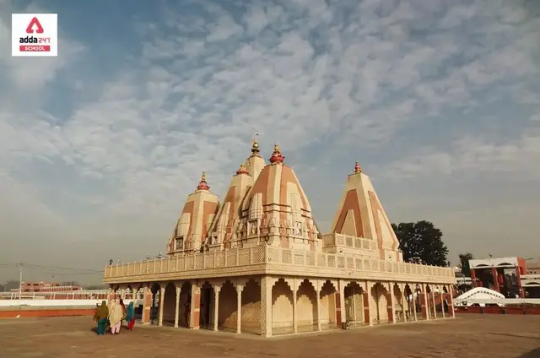
2 notes
·
View notes
Video
youtube
Punjabi - Jatt Aekta Zindabad. If you do not support your Jatt Political... Punjabi - Jatt Aekta Zindabad. If you do not support your Jatt Political Party, Unionist Party, you will PERISH. https://youtu.be/ZHxBT4NlJ7A Punjabi - Honour our Ch. Chhotu Ram Ohylan Jatt and vote a Jatt only. Lalas greeted our Pillar with black armbands. https://youtu.be/Ym_A1KOqfxY SHAME ON OUR EDUCATED JATTS, THEY CAN’T UNITE US. IN 1947, OUR JATTS WERE NOT EDUCATED. LATTON KAE BHOOTT BATTON SAE NAHI MANTTAE. PAGRRI SANBHAAL JATTA https://youtu.be/gSwPvK3B4rg Much more on my website:- http://www.gnosticgospel.co.uk/UnitedJatts.htm Punjabi - Taliban - Al-Djmar Al-Aksa is best defeated by the tribal sons of Man and not by the guns. https://youtu.be/1dDW3SapKWE NAHI TO LALLON NAE AAP KAA DAMM BANDH KRNA HAE; KALI JHANDI LAGWA DO LALLON KAE. Youtube video in Punjabi:- https://youtu.be/QJLnbgoMMkM http://www.gnosticgospel.co.uk/Chhotu.pdf PAEHLAE APNAE JISUM KAE BAAP, KACHA PEO – BEEJ – KO PAHCHANO – BRAHM KAE BAETTAE; PHIR AAP KO PAKKAE ROOH DAE PEO ELOHIM, ALLAH, PARBRAHM, ETC. KI KHABRAE HOSHH AUR SAMAJHH AAYE GEE. HAMAARI QOM, JAATI, KABEELA, ILAH, VAGAERA “SIRF JATT” HAE AUR MAZHAB AIK KAMEEZ KI TAREH/NEAYAN HAE. MAZHAB BADLA JAA SKTA HAE LAIKANN HAMARI JATT QOM NAHI BADLI JAA SAKTI. FOR THAT YOU NEED TO HAVE HEEYA OF YOUR TRIBAL FATHER “ILAH” = NISAFF EEMAN AND BE TRUTHFUL, CONTENTED (HAQ HALLAL) AND MERCIFUL = FULL EEMAN = MUSSALLMAN = GURMUKH SIKH. https://youtu.be/7VmQG3ew19E CHAUDHRY CHHOTU RAM OHLYAN JATT KO YAAD KRO AGGAR AAP NAE SIYASATT MAE KAMYAAB HONA HAE. Punjabi - Ch. Saddam Hussein Khokhar was a Jatt of the same Calibre as our Ch. Chhotu Ram Ohlyan Jat https://youtu.be/XAb1fhT3Mqk GET THESE JATT UNITY BANNERS MADE AND DISPLAY THEM AT THE BORDERS TO MELT AWAY THE BORDERLINE DIVIDING OUR JATTS. Let us support our New Chaudhry Chhotu Ram Ohliyan Pillar Chaudhry Satya Pal Malik Ji. Banners of our Jatt Unity:- www.gnosticgospel.co.uk/JattBanner.jpeg www.gnosticgospel.co.uk/JattIslam.htm www.gnosticgospel.co.uk/JattSikhism.htm Satanic greedy Khatris’ Youtube videos; channel Punjab Siyan:- https://www.youtube.com/watch?v=wr5EqtvA_lg&t=722s https://www.youtube.com/watch?v=Fn3rWg_0X4w https://www.youtube.com/channel/UC9w4DezupWngZzx_1wg5prQ Punjabi - No son of Brahma, a Hindu, no son of Parbrahm, a Sikh but Shankar Varniyia Super Bastard Fanatic Devil, a TERRORIST. https://youtu.be/PMMG99nMANk Bhagat Namdev Ji:- Hindu is spiritually blind, Munn Mukh Sikh, Turkoo, is very crafty whilst Gurmukh Sikh, Giani, is sealed to serve God and wiser than both. https://youtu.be/GDqOcARj4Po Punjabi - Satguru Angad Dev Ji was the "Kiln" where the Mitti Mussallman ki, sons of Man were baked. https://youtu.be/aMBUhvacOAw WHY TEN LIGHTS? Nanak wasn't a Moral Teacher, a Brahmin Guru but Satguru = Christ. https://youtu.be/HquVBRjtXF8 www.gnosticgospel.co.uk/tenlight.htm Punjabi - Nirmallae Sants learnt the Scriptures from Kanshi and then, they Preached the Gospel. They do not handle money. https://youtu.be/chiRrKtEqLg Why did you vote for parties other than your own tribal Party Jatt? DON’T KILL EACH OTHER IN THE INDO-PAK WARS. http://www.gnosticgospel.co.uk/Riots.htm JAATTRRA SAE KAATRRA; APNA HI GHAR GHALLAE SAE.list=PL0C8AFaJhsWwYKeFSCQNc6dOGm92fk4A4 A Video on Atomic War:- https://youtu.be/qDU964t_0i0 Playlist on Jattistan:- https://www.youtube.com/playlist?list=PL0C8AFaJhsWxsONN55F1ZZGdM-SMvjrmg https://www.youtube.com/playlist?list=PL0C8AFaJhsWz9zwqDMqorcpkSUgi8NJqX We need a singer to sing this song in honour of our Pillar Ch. Chhotu Ram Ohlyan Jatt www.gnosticgospel.co.uk/ikchor.pdf Navjot's Video:- https://www.youtube.com/watch?v=2LZXvCL3rR8 By proclaiming Sikh Qom. https://youtu.be/O0iERZu_TyU Sikh is the Second Panth/religious community into which all are welcome whilst Jatt is our Qom and they are people born of the seed of Jatt tribal father. Rooftops. https://youtu.be/yTSYd_FujE4 Jatt is our Qom and not Hindu Jatt, Sikh Jatt, Muslim Jatt, etc. http://www.gnosticgospel.co.uk/jattparty.htm http://www.gnosticgospel.co.uk/saintstn.htm Here are the basic definitions:- www.gnosticgospel.co.uk/short.htm Punjabi Book in DRChatrik Fonts:- www.gnosticgospel.co.uk/pbook.htm www.gnosticgospel.co.uk/pdbook.pdf Muslims, etc. will perish https://youtu.be/MlZuQcWoyj0 Punjabi - Damdami Taksaal = Madrissa to produce religious fanatics = Talibans such as Bhindranwalla https://youtu.be/wUEX1syEL8U Punjabi - Bhindranwala was neither a Sikh that carried weapons in the Singh Ji never entered because Khalsas and Sikhs are not compatible. Bhai Kahniyia Ji. https://youtu.be/Iy3qXU6tI88 FOR THAT YOU NEED TO HAVE HEEYA OF YOUR TRIBAL FATHER “ILAH” = NISAFF EEMAN AND BE TRUTHFUL, CONTENTED (HAQ HALLAL) AND MERCIFUL = FULL EEMAN = MUSSALLMAN = GURMUKH SIKH. https://youtu.be/7VmQG3ew19E MATT. 13V24-30:- ATOMIC WAR EXPECTED SOON AFTER 14/05/2025 YouTube Channel:- Jatt Unity ONE GOD ONE FAITH www.gnosticgospel.co.uk/bookfin.pdf Punjabi www.gnosticgospel.co.uk/pdbook.pdf Trinity www.gnosticgospel.co.uk/trinity.pdf
0 notes
Text
Punjabi festivals are a vibrant blend of cultural traditions, religious significance, and community celebrations, deeply rooted in the region’s heritage. The festivals are primarily based on the Nanakshahi calendar, which marks important events related to Sikh Gurus, such as birth anniversaries and martyrdoms. These festivals offer a profound insight into Sikhism and Punjab’s values, with each one embodying the spirit of unity, joy, and devotion.
Here are some of the major festivals celebrated in Punjab:
Guru Gobind Singh Jayanti: Celebrated in December or January, this festival honors the birth of Guru Gobind Singh, the tenth Sikh Guru. Devotees remember his teachings through kirtans, processions, and acts of seva (selfless service).
Lohri: Held on January 13, Lohri marks the end of winter and the beginning of the harvest season, particularly the rabi crops. The festival involves gathering around bonfires, singing folk songs, and performing traditional dances like bhangra and gidda. Lohri also holds significance for newlywed couples and newborns, with families organizing grand celebrations.
Hola Mohalla: Occurring the day after Holi, Hola Mohalla celebrates Sikh martial heritage with displays of martial arts, horse riding, and archery. Held over three days at Anandpur Sahib, the festival combines physical endurance with spirituality, featuring kirtans, poetry recitations, and community meals.
Vaisakhi: This festival, celebrated on April 13 or 14, marks the Punjabi New Year and the harvest of wheat. It also commemorates the founding of the Khalsa Panth by Guru Gobind Singh in 1699. Gurudwaras are decorated, and there are community prayers, processions, and langars (community kitchens).
Bandi Chhor Diwas (Diwali): While Diwali is celebrated across India, Sikhs observe it as Bandi Chhor Diwas, marking the release of Guru Hargobind Ji from imprisonment. The day is celebrated with lights, fireworks, sweets, and family gatherings, especially at the Golden Temple in Amritsar.
Guru Nanak Jayanti: The most significant Sikh festival, Guru Nanak Jayanti celebrates the birth of Guru Nanak, the first Sikh Guru, on Kartik Purnima (usually in November). The day is filled with Akhand Path (continuous reading of the Guru Granth Sahib), processions, and kirtans.
Punjabi festivals are an enriching way to explore the culture, faith, and history of Punjab. They provide visitors with a deep connection to Sikhism, making them a unique cultural experience. Whether it's the lively celebrations of Lohri or the spiritual atmosphere of Guru Nanak Jayanti, these festivals are a testament to the region’s rich heritage.
Click here to read more about the significance of Punjab’s festivals and their cultural roots!
For those looking to explore these festivals and sacred sites, we being the best tour and travel company in India, provide customized tour packages to tourists from USA, UK, Canada, Australia, Singapore, etc. These festivals foster a deeper appreciation for Punjab’s cultural and spiritual significance, making them an unforgettable experience.
1 note
·
View note
Text
Exploring the Sufi Legacy of Hans Raj Hans
Hans Raj Hans, a name synonymous with soul-stirring music and powerful vocals, is a celebrated figure in Indian music, particularly in Punjabi and Sufi genres. His contributions have transcended boundaries, making him a household name across cultures and generations. Known for his ability to evoke emotions through his rich voice, Hans Raj Hans has gifted the world songs that resonate with the essence of love, spirituality, and life’s myriad experiences. In this article, we delve into the timeless appeal of Hans Raj Hans, tracing his journey from humble beginnings to becoming a global musical icon.
A Humble Beginning in Punjab
Born in a small village, Shafipur, in Punjab, Hans Raj Hans grew up surrounded by the rich traditions of Punjabi folk music. From a young age, he showed an affinity for music, often inspired by the cultural and religious melodies that were an integral part of his upbringing. His deep, resonant voice quickly set him apart, and it was clear that he was destined for greatness.
Hans Raj Hans received formal training in classical music, which laid the foundation for his mastery over diverse genres. His mentor, Ustad Puran Shah Koti, played a pivotal role in shaping his musical sensibilities. Under this guidance, Hans Raj Hans developed a profound understanding of the emotional and spiritual aspects of music, a trait that would define his career.
Key Milestones in His Music Career
Hans Raj Hans’s entry into the music industry marked the beginning of an illustrious journey. His unique ability to blend the earthy tones of Punjabi folk with the transcendental vibes of Sufi music set him apart. Over the years, he delivered numerous chart-topping hits that are still celebrated today.
One of his earliest and most iconic songs, Dil Chori Sada Ho Gaya, became an instant classic. The song’s catchy melody and heartfelt lyrics struck a chord with listeners and solidified his position as a leading Punjabi singer. This was followed by several other hits like Nach Punjaban and Ik Kudi Jida Naam Mohabbat Hai, each showcasing his versatility and deep connection to the music.
Hans Raj Hans also ventured into Bollywood, lending his voice to memorable tracks such as Dil Tote Tote Ho Gaya from the movie Bichhoo. His ability to convey complex emotions through his voice made him a favorite among music directors and fans alike.
The Sufi Influence
One of the defining aspects of Hans Raj Hans’s music is its spiritual depth. Deeply inspired by Sufi philosophy, his songs often explore themes of love, devotion, and the divine. Tracks like Aaja Nachle and Mitti Da Bawa reflect his inclination towards the mystical and spiritual aspects of life.
His music serves as a bridge between the material and the spiritual, offering listeners a sense of solace and connection. Hans Raj Hans’s commitment to preserving and promoting the Sufi tradition has earned him accolades not just in India but globally. His concerts and performances, infused with Sufi elements, continue to mesmerize audiences worldwide.
Global Recognition
Hans Raj Hans’s appeal is not limited to India. His music has crossed borders, earning him fans from all corners of the globe. Through international tours and collaborations, he has introduced Punjabi and Sufi music to audiences who might not have encountered these genres otherwise.
Notably, his collaborations with Western artists have helped create a fusion of sounds that appeal to a global audience. This blend of traditional and contemporary music highlights Hans Raj Hans’s adaptability and innovative spirit.
Impact on Punjabi Music and Culture
Hans Raj Hans’s contributions have played a significant role in shaping the landscape of Punjabi music. At a time when Punjabi music was primarily regional, his efforts helped bring it into the mainstream. His ability to infuse traditional Punjabi folk with modern sounds made the genre more accessible to younger generations.
Beyond his music, Hans Raj Hans is an ambassador of Punjabi culture. His commitment to preserving the language and traditions of Punjab is evident in his work and public engagements. He has inspired countless artists, proving that cultural roots and global appeal can coexist.
Legacy and Influence
Hans Raj Hans’s music has left an indelible mark on the hearts of his listeners. Over the years, he has received numerous awards and honors for his contributions to music and culture. His ability to connect with his audience, regardless of age or background, is a testament to his talent and authenticity.
His influence extends beyond the world of music. Hans Raj Hans has also ventured into politics, using his platform to advocate for social and cultural issues. Despite his political commitments, he continues to be an active and passionate musician, ensuring that his legacy remains alive and vibrant.
Conclusion
Hans Raj Hans journey is one of passion, perseverance, and unparalleled talent. From his humble beginnings in Punjab to becoming a global icon, he has remained true to his roots while continuously evolving as an artist. His songs, steeped in emotion and spirituality, have the power to move hearts and transcend boundaries.
As we celebrate his timeless appeal, it’s clear that Hans Raj Hans is not just a musician but a cultural phenomenon. His music will continue to inspire and connect people across the world for generations to come.
Are you a fan of Hans Raj Hans’s music? Share your favorite song in the comments below! Don’t forget to explore our curated playlist of his iconic tracks and immerse yourself in the magic of his voice. Whether you’re revisiting old favorites or discovering his music for the first time, Hans Raj Hans promises an unforgettable journey through sound and soul.
0 notes
Text
Desi Cinema: A Tapestry of Culture, Storytelling, and Global Influence"
Desi Cinema: A Glimpse into the Heartbeat of South Asia’s Cultural Landscape
Desi cinema, often referred to as Indian cinema or South Asian cinema, is a vibrant and diverse entertainment industry that has left an indelible mark on global filmmaking. It is an amalgamation of various regional film industries that produce films in languages like Hindi, Tamil, Telugu, Bengali, Punjabi, Malayalam, and many others. The term "Desi" itself refers to the cultures, people, and languages of the Indian subcontinent, encompassing India, Pakistan, Bangladesh, Nepal, Sri Lanka, and the global diaspora.
Desi cinema is a celebration of storytelling that reflects the rich traditions, social issues, politics, family dynamics, and religious themes inherent in South Asian cultures. It is not merely a medium for entertainment but a reflection of societal values, struggles, and aspirations. From Bollywood to regional cinema, the world of Desi cinema is as diverse as the subcontinent itself.
The Rise of Indian Cinema: Bollywood and Beyond
The roots of Indian desicinema date back to the early 20th century, with the first feature film, Raja Harishchandra, directed by Dadasaheb Phalke in 1913. Since then, Indian cinema has evolved dramatically, with the industry gaining both national and international prominence.
The most well-known segment of Indian cinema is Bollywood, the Hindi-language film industry centered in Mumbai. Bollywood has become synonymous with Indian cinema, producing hundreds of films annually and exporting them to countries around the world, especially to other parts of South Asia, the Middle East, Africa, and the Indian diaspora in the West. Its distinctive features, such as melodious songs, vibrant dance routines, larger-than-life narratives, and colorful visuals, have attracted millions of viewers globally.
However, it is important to note that Bollywood is only one part of the vast Indian film industry. Other regions of India also produce highly influential films in their own languages, each contributing to the multicultural fabric of Indian cinema.
Tamil Cinema – Kollywood
Tamil cinema, also known as Kollywood, is based in Chennai and is one of the largest and most influential film industries in India. Kollywood has produced films that explore a range of genres from socially relevant dramas to action-packed thrillers, often characterized by intense emotions, powerful storytelling, and a distinct style of music. The Tamil film industry has a long tradition of creating powerful films with a focus on social issues such as caste discrimination, rural development, and political corruption.
Telugu Cinema – Tollywood
Tollywood, the Telugu-language film industry, primarily based in Hyderabad, is another major player in South Indian cinema. Telugu films are known for their elaborate action sequences, colorful visuals, and grand storytelling. In recent years, Tollywood has also gained international recognition with films like Baahubali: The Beginning and Baahubali: The Conclusion, which became global phenomena. These epic historical films showcased the industry’s growing appeal to international audiences and its increasing ability to produce films that rival international standards in terms of production quality.
Bengali Cinema – Tollywood (West Bengal)
While the name "Tollywood" is often associated with Bengali cinema, this part of Indian film culture is distinct in its own right. Bengali cinema, with a rich history of intellectual and artistic filmmaking, has produced renowned directors like Satyajit Ray, Ritwik Ghatak, and Mrinal Sen, whose works have had a profound influence on world cinema. The genre of Bengali films often delves deep into psychological and social issues, exploring human complexities and the nuances of everyday life.
Malayalam Cinema – Mollywood
Mollywood, the Malayalam-language film industry based in Kerala, has earned a reputation for producing thought-provoking and socially aware films. Malayalam cinema is known for its realistic approach to storytelling, often exploring human relationships, social issues, and political struggles. Directors like Adoor Gopalakrishnan and films such as Kalyanaraman and Drishyam have earned accolades for their compelling narratives and innovative filmmaking techniques.
Themes in Desi Cinema: Diversity and Social Commentary
One of the defining features of Desi cinema is its ability to mirror the complex social, political, and cultural fabric of South Asia. The narratives often blend traditional storytelling with contemporary issues, resulting in films that are as entertaining as they are socially relevent
Family, Love, and Relationships
At its core, Desi cinema is often about family. Whether it’s Bollywood, Kollywood, or any other regional industry, films have long been shaped by the importance of family, love, and sacrifice. Many Bollywood films, for example, center around the idealization of family bonds, and while the genre has evolved over time, these core themes remain central to the narrative.
Similarly, Tamil and Telugu films are also rooted in family values, exploring generational conflicts, sibling relationships, and parent-child dynamics. The portrayal of love, both in its romantic and familial forms, is a key aspect of many films across the subcontinent.
Politics and Social Issues
South Asian cinema frequently tackles political and social issues, shedding light on topics such as poverty, corruption, gender inequality, religious conflict, and caste-based discrimination. Directors like Anurag Kashyap (Gangs of Wasseypur), Rajkumar Hirani (PK, 3 Idiots), and Mani Ratnam (Roja, Dil Se) have used the medium to critique societal norms, government policies, and cultural traditions.
Films such as Lagaan (2001) and Shahid (2012) have addressed historical injustice and modern-day struggles. Article 15 (2019), directed by Anubhav Sinha, deals with caste discrimination and social inequality, showing how film can serve as both an entertainment medium and a platform for dialogue on serious societal issues.
Music and Dance
No discussion of Desi cinema would be complete without acknowledging the significance of music and dance. Bollywood, in particular, has built its legacy on the integration of songs and dance sequences into the narrative, where the music becomes an essential character of the story. Whether it’s the romantic ballads of the 1960s or the foot-tapping hits of today, music plays a vital role in both setting the tone of a film and communicating emotions that go beyond dialogue.
Similarly, regional cinemas, especially those in Tamil, Telugu, and Punjabi, also feature music and dance sequences that are often as significant as the plot itself. The use of vibrant costumes, intricate choreography, and catchy tunes reflects the cultural richness of the regions.
Global Influence and Diaspora Cinema
In recent decades, Desi cinema has increasingly found recognition on the global stage, not just through international film festivals but also through its global diaspora. South Asian communities across the world, particularly in the United States, the UK, and the Middle East, have long been an audience for Indian and regional cinema. The migration of South Asians to the West has led to the creation of diaspora cinema, which explores the challenges and triumphs of living between two cultures.
Films like The Namesake (2006), directed by Mira Nair, and Bend It Like Beckham (2002) by Gurinder Chadha have explored themes of identity, cultural clashes, and assimilation. These films have resonated deeply with the South Asian diaspora, as they speak to the complexities of maintaining one's cultural heritage while adapting to a new life abroad.
Conclusion
Desi cinema is more than just entertainment—it is a reflection of the subcontinent’s diverse cultural, social, and political landscape. Whether it’s Bollywood’s song-and-dance extravaganzas, Tollywood’s sweeping epics, or the socially conscious narratives of Malayalam and Bengali cinema, Desi films continue to captivate audiences around the world.
As South Asian films make their mark on international platforms such as Netflix, Amazon Prime, and film festivals, the industry is proving that its influence is global and growing. The future of Desi cinema looks brighter than ever, with filmmakers from across the region pushing boundaries, experimenting with new genres, and telling stories that resonate far beyond their cultural origins.
In the ever-evolving world of cinema, Desi cinema remains a beacon of creativity, emotion, and cultural pride, an art form that continues to shape the way we see the world—and the way the world sees us.
1 note
·
View note
Text
These Sangeet pictures will make you want to break a leg

What is an Indian wedding without some grooves and moves? Indian weddings are all about fun rituals and traditions. Sangeet is one of the most beautiful rituals in Indian weddings as it helps all of your friends and family come together to enjoy together The Sangeet is the first of numerous pre-wedding celebrations that take place before Hindu, Punjabi, and Gujurati wedding rituals. Sangeet is a Sanskrit term that means "sang together." This ceremony is now being followed by many other countries as a type of celebration for the upcoming wedding. It is traditionally celebrated in India as one of the most important ceremonies.
The ceremony is traditionally known to attract exclusively female guests from both sides of the family, but current times have allowed males to engage in the festivities as well. Unlike religious events like the Haldi or sections of the wedding ceremony, the Sangeet is exclusively held to celebrate the couple's pleasure and delight.
Originally, the Sangeet would stretch for ten days, culminating in the wedding day, but this custom has now been reduced to a one-day celebration to squeeze all of the wedding activities into one week. Before the Mehndi ceremony, the Sangeet ceremony takes place two or three days before the wedding. This celebration includes dances by the Bride and Groom's relatives and friends, songs are sung in unison by the family's senior female members with the bride as the center point, and an open dance floor to memorialize the celebrations for the days ahead.
The celebration takes place at the Bride's home or a separate banquet hall, where the Bride's family greets the Groom's family by singing Suhaag, a traditional folk song set to the Dhol's beat. Female family members from both sides of the family gather to perform traditional songs about the bride and groom. The family's elders lead the group, dictating the songs to sing at the Sangeet. Punjabi culture is home to this singing practice. 'Jokes' concerning in-laws, the bride leaving her parents' house, and how to have a great marriage are among the songs. The purpose of the Sangeet is not only to celebrate but also to bring the families together so that they may get to know one another before the big day. Relatives and friends of the Bride and Groom choreograph dance numbers to perform for the couple adding to the jubilation of the event. The song and dance portion of the Sangeet is a social bond connecting the two families and to the bride and groom.
1 note
·
View note
Text
Khaaki banda/A Mere Mortal Made of Clay, Sufi song
“Khaki Banda” is a Sufi-Rock song written and composed byShuja Haider, incorporating some of Bulleh Shah’s phrases, sung by Ahmed Jahanzeb and Umair Jaswal.
A live version was recorded in Season 9, Episdoe 3 (2016) of "Coke Studio Pakistan." This production is absolutely one of the best live music shows highlighting musics of South Asia. I view many of the show's uploads on Youtube, and have purchased some of the CDs and DVDs.
While this song was composed with Sufi sensibilities, almost all of the lyrical themes can be appreciated by Christians, so I'm featuring it on this blog. See below for analysis of the religious themes.
+++
The basis of the Punjabi lyrics were written by Syed Abdullah Shah Qadri (1680–1757), also known as Baba Bulleh Shah. He was a 17th-century Punjabi philosopher and Sufi poet.
Shuja Haider, the music director of the song, added some additional lyrics. https://discover.hubpages.com/literature/Khaki-Banda-a-soulful-Sufi-rock-song
+++
English subtitles are on the screen, and an English translation is below.
youtube
+++
Khaaki banda Karda phire khudaayi Lau la baitha dunya naal Rabb ton kare judaai
A mere human made of clay Goes around acting as if he’s as invincible as God He’s lost himself completely to this ephemeral world And does not ponder his relationship with his Lord
Na kar bandya meri meri Na teri na meri Chaar dinnaan da e mela Dunya fer matti di dheri
O human, leave off this battle for worldly possessions Nothing here can ever truly belong to us The glittering spectacle of this world lasts but a few days And then everything turns to dust
Padh padh kitaabaan ‘ilm diyaan Naan rakkh liya ee qaazi Makke Madeene ghum aaya te Naan rakh liya ee haaji
You’ve filled your head with mere bookish knowledge And smugly titled yourself a grand authority You’ve done a round of Mecca and Medina And smugly titled yourself a holy pilgrim
Satrangi re na-daani teri Nautanki re man-maani teri
You are fooled by the bright spectacle of this world Your proud willfulness is driven by nothing but conceit
Deen dharam di gallan baataan kar kar ke wi samajh na aayi Firqe wande ‘ilm na wanbya Wich weeraan boyi ladaai
Your never-ending religious debates failed to create a deeper understanding You spread people into conflicting camps, but failed to spread real knowledge All you did was sow seeds of dissension among friends and brothers
Na kar bandiya heri pheri Na teri na meri Chaar dina da e mela Dunya fer matti di dheri
O human, don’t get caught up in worldly matters Nothing here can ever truly belong to us The glittering spectacle of this world lasts but a few days And then everything turns to dust
Khoti neeyat khote sikke Na dewan saccha haani Badlega tu badle ga sab De nafs apne di tu qurbaani
False intentions, deceit, and duplicity Can never win you sincere companions All will change if you only change yourself Slay your own base desires
Sat-rangi re na-daani teri Man-rangi re na-daani teri Satrangi re na-daani teri Nautanki re man-maani teri Ae zaat magar faani teri Aa dil de raste te chal
You are fooled by the bright spectacle of this world Your proud willfulness is driven by nothing but conceit But your being is ephemeral Come, follow the path of Love!
Chadhde sooraj dhalde Bujhde deeve balde Jinna da na jag te koi Oh vi puttar palde vekhe Loki kehnde daal ni galdi Main te patthar galde vekhe
I’ve seen the sun that rises also set I’ve seen flickering lamp blaze anew The orphans who have no one left in this world I’ve seen them also find the means to flourish People say that success is beyond reach But I have seen the impossible become possible
Satrangi re na-daani teri Nautanki re man-maani teri Satrangi re na-daani teri Nautanki re man-maani teri Ae zaat magar faani teri Aa dil de raste te chal
You are fooled by the bright spectacle of this world Your proud willfulness is driven by nothing but conceit But your being is ephemeral Come, follow the path of Love!
Sona chaandi heere moti kha lai tu Ucche makaana kamre bhaven saja lai tu Laazim nahi hai keh khushiyaan saari ki saari kama lai tu Raataan ‘ch kalliyaan ro ro rabb apne nu mana lai tu
Dhokkhe-baazi vich guzaara dekhe na sajjan bhaayi Raaz tere raaz mere jaane Khuda di khudaayi
You can gobble up pearls, diamonds, and all the riches of the world You can construct grand mansions and adorn them beautifully But true happiness is something difficult to buy So spend your nights in solitary vigil, weeping for your Lord’s forgiveness
Those who live by dishonest means don’t hesitate to harm even their loved one God in His infinite power is privy to all our secrets
Satrangi re na-daani teri Nautanki re man-maani teri Satrangi re na-daani teri Nautanki re man-maani teri Ae zaat magar faani teri Aa dil de raste te chal
You are fooled by the bright spectacle of this world Your proud willfulness is driven by nothing but conceit But your being is ephemeral Come, follow the path of Love!
Khaaki banda Karda phire
A mere human made of clay Goes around acting…
Khaaki banda Khaaki banda Karda phire…
A mere human made of clay A mere human made of clay Goes around acting…
Translated by Zahra Sabri With special thanks to Asim Raza
Lyrics and translation from https://www.lyricsmint.com/coke-studio/khaki-banda
+++
Coke Studio Pakistan has 700+ music videos online! If you want to learn about some of the very best musics being made in this part of the world, start browsing. :-) I have been on a ministry trip within Pakistan, and highly value my friendships made there, the creativity of Christians there, and the centuries of expert musicality in what is now Pakistan. https://www.youtube.com/@cokestudio https://www.facebook.com/cokestudio
+++
Misbah Sheikh provides a detailed analysis of the lyrical themes in an excellent (2021) post at https://discover.hubpages.com/literature/Khaki-Banda-a-soulful-Sufi-rock-song
Here are a few excerpts from his lengthy analysis of the song lyrics:
The song describes how man lives in this world and how he should live. It says that a man is nothing more than a clay-sculpted person. He wants to rule the world but has lost sight of reality. He acts as if he is God.
A person sculpted out of clay. He's lost himself in this ephemeral world, acting as if he's as invincible as Lord, and he's not thinking about his Master...
The song reveals another nature of man. He does good deeds and then thinks of himself as he worth all praise. Here the writer of the song referred to Mecca and Madina (the holy pilgrimages of Muslims as the writer of this song was a Muslim so he is referring to the Islamic world here but it is a universal message to the whole of mankind. Going to churches, mosques, temples are not the deeds that make us good people. It requires much more effort and hard work.)
He says you've made pilgrimages to Mecca and Medina and declared yourself a holy pilgrim. You've been duped by the world's dazzling entertainment, and your arrogant tenacity is fueled solely by conceit.
Only going to Mecca and Medina is not what makes you a holy pilgrim. It needs more hard work than just traveling there. Here the lyricist encourages us to do good deeds and asks us not to forget death.o is always loving and forgiving. Knowing all of our sins. He never fails to forgive and bless us. Because God is the source of all Love. He teaches Love, which is all we need. Sadly, Love is the only thing we have forgotten. I believe, Love is the answer to every question. Only love has the ability to soften even the hardest of hearts...
Finally, the lyricist claims that anyone could get pearls, diamonds, and all of the world's wealth. Man has the ability to build large mansions and can lavishly adorn them. True happiness, on the other hand, is more difficult to get. He encourages us to spend our nights solely in prayers, requesting God to forgive us. He says our Lord is merciful and listens to our prayers; He will forgive us as He loves us very much.
He then says that God, with His Infinite Power, is aware of all our secrets. He is aware of all of his and our secrets. He is the One Supreme Power, and nothing is hidden from Him. He claims that the world's glittering display has misled man. Man's arrogance stems solely from a sense of self-importance. The dazzling display of this world has misled him. He is just arrogant because of his ego.
In concluding words, the song tells us that we (the human) are only here for a brief time. So, we should put aside our disagreements and don't allow our egos to rule our life. He encourages us to come and walk on the path of love, for we are nothing more than clay sculptures, and one day we all have to return to our Creator.
Read more of his analysis of the lyrical themes at https://discover.hubpages.com/literature/Khaki-Banda-a-soulful-Sufi-rock-song
+++

0 notes
Text
A Glimpse into the Spiritual and Cultural Richness of Jammu and Kashmir
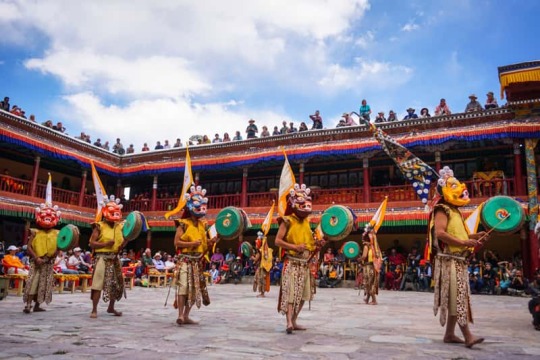
Kashmir, often referred to as "Paradise on Earth," is renowned for its breathtaking landscapes, serene lakes, and snow-capped mountains. Beyond its natural beauty, Kashmir is also a land rich in religious and cultural heritage. The region is home to diverse religious places in Kashmir and there are vibrant festivals in Jammu and Kashmir that reflect its historical and spiritual significance.
Religious Places in Kashmir
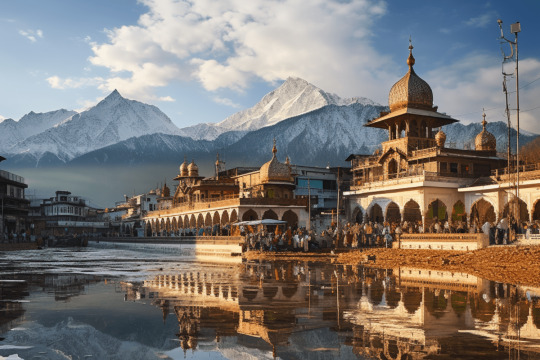
1. Shankaracharya Temple: Perched on the Shankaracharya Hill, the Shankaracharya Temple is one of the oldest and most revered Hindu shrines in the Kashmir Valley. Dedicated to Lord Shiva, this ancient temple is believed to have been visited by Adi Shankaracharya in the 8th century. The temple offers a panoramic view of Srinagar and the Dal Lake, making it a spiritual and visual treat for visitors.
2. Hazratbal Shrine: Located on the northern shores of the Dal Lake, the Hazratbal Shrine is the holiest Muslim shrine in Kashmir. It houses a relic believed to be a hair of the Prophet Muhammad. The shrine's pristine white marble structure and its serene surroundings attract devotees and tourists alike. The annual celebrations during the festivals of Eid and Milad-un-Nabi see a significant influx of pilgrims.
3. Amarnath Cave Temple: The Amarnath Cave Temple is one of the most important Hindu pilgrimage sites, dedicated to Lord Shiva. Situated at an altitude of 3,888 meters, the temple is famous for the naturally occurring ice Shiva Lingam. The annual Amarnath Yatra, which takes place in the summer months, draws thousands of devotees who undertake a challenging trek to pay their respects.
4. Jama Masjid: Situated in the heart of Srinagar’s old city, the Jama Masjid is a stunning example of Indo-Saracenic architecture. Built in 1394 by Sultan Sikandar, it features 378 wooden pillars and an expansive courtyard. The mosque is not only a place of worship but also a center for social and cultural gatherings.
5. Kheer Bhawani Temple: Located in the village of Tulmulla, about 25 kilometers from Srinagar, the Kheer Bhawani Temple is dedicated to Goddess Ragnya Devi. The temple is named after the rice pudding (kheer) that is offered to the goddess by devotees. The annual festival of Mela Kheer Bhawani, held on the occasion of Zyestha Ashtami, sees thousands of devotees thronging the temple.
Festivals in Kashmir
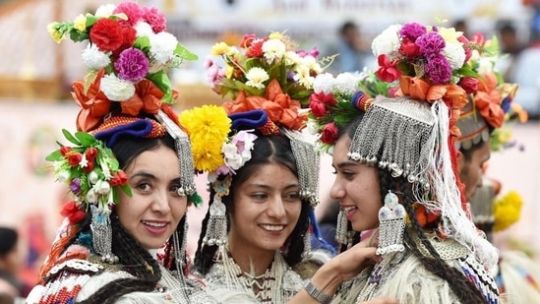
1. Navroz: Navroz, the Persian New Year, is widely celebrated by the Shia Muslim community in Kashmir. It marks the beginning of the spring season and is a time for family gatherings, feasting, and prayers. Traditional foods, such as lamb dishes and sweets, are prepared, and homes are decorated to welcome the new year.
2. Eid-ul-Fitr and Eid-ul-Adha: Eid-ul-Fitr marks the end of Ramadan, the holy month of fasting, while Eid-ul-Adha commemorates the willingness of Prophet Ibrahim to sacrifice his son in obedience to God. Both festivals are celebrated with great fervor in Kashmir. Special prayers are held in mosques, and families come together to share festive meals and distribute alms to the needy.
3. Maha Shivaratri (Herath): Maha Shivaratri, locally known as Herath, is a significant festival for Kashmiri Pandits. It is dedicated to Lord Shiva and Goddess Parvati and is celebrated with night-long vigils, prayers, and the offering of walnuts as a symbol of fertility. Special dishes, such as fish and rice, are prepared for the occasion.
4. Baisakhi: Baisakhi, primarily a harvest festival, is celebrated with enthusiasm by the Sikh community in Kashmir. It also marks the Punjabi New Year and the formation of the Khalsa in 1699 by Guru Gobind Singh. The festival involves prayers, kirtans (devotional songs), and community feasts known as langars.
5. Hemis Festival: The Hemis Festival, held in the Hemis Monastery in Ladakh (part of the greater Kashmir region), is a vibrant celebration dedicated to Lord Padmasambhava (Guru Rinpoche). The festival features colorful masked dances, traditional music, and rituals performed by the monks. It is one of the most significant Buddhist festivals in the region.
6. Tulip Festival: While not a religious festival, the Tulip Festival in Srinagar has become a major cultural event. Held in April, the festival showcases the stunning bloom of tulips at the Indira Gandhi Memorial Tulip Garden, Asia's largest tulip garden. The event attracts tourists from across the globe and highlights Kashmir’s natural beauty and cultural heritage.
Conclusion
Kashmir’s religious places and festivals are a testament to its rich and diverse cultural tapestry. These sacred sites and celebrations not only provide spiritual solace to the faithful but also offer a glimpse into the region’s historical and cultural richness. Visiting these places and participating in the festivals provides an enriching experience that deepens one’s understanding of Kashmir’s unique heritage.
1 note
·
View note
Text
𝐆𝐮𝐫𝐮𝐩𝐮𝐫𝐚𝐛 – 𝟓𝟓𝟒𝐭𝐡 𝐁𝐢𝐫𝐭𝐡 𝐀𝐧𝐧𝐢𝐯𝐞𝐫𝐬𝐚𝐫𝐲 𝐨𝐟 𝐆𝐮𝐫𝐮 𝐍𝐚𝐧𝐚𝐤 𝐃𝐞𝐯 𝐉𝐢
𝐆𝐮𝐫𝐮𝐩𝐮𝐫𝐚𝐛 – 𝟓𝟓𝟒𝐭𝐡 𝐁𝐢𝐫𝐭𝐡 𝐀����𝐧𝐢𝐯𝐞𝐫𝐬𝐚𝐫𝐲 𝐨𝐟 𝐆𝐮𝐫𝐮 𝐍𝐚𝐧𝐚𝐤 𝐃𝐞𝐯 𝐉𝐢
The `Gurpurab’ of Sri Guru Nanak Dev Ji, the first Guru of the Sikhs’ and founder of Sikhism was celebrated amidst religious devotion at Longowal Group of Colleges.

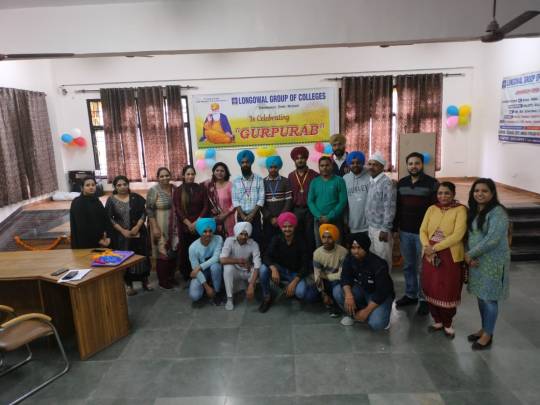
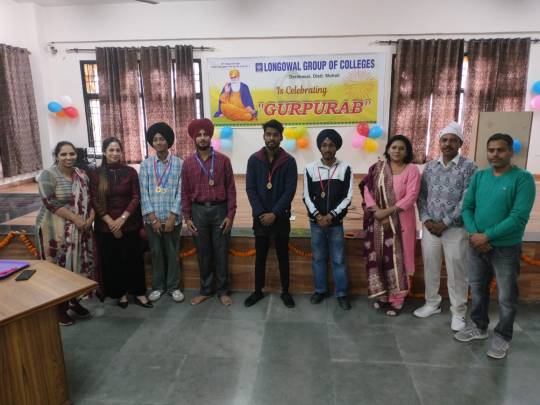

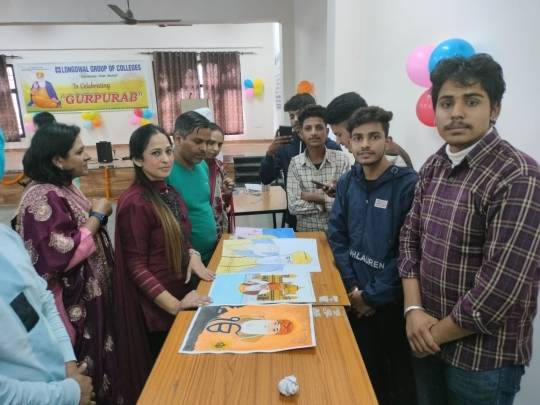

To mark the occasion, the students recited the Gurbani and Shabad in praise of Guru Nanak Dev Ji. This was followed by competitions like Dastar Bandi, Poster making and Pranda Tying.
The students beautifully portrayed the life and teachings of the Guru Nanak Dev Ji on the canvas. They gave speeches and shed light on the life and philosophy of revered Guru.
They spoke about his life history and his message for mankind. The whole atmosphere was filled with a sense of peace and tranquility. Dr. Rosy Katyal (Principal Longowal Polytechnic College) and Dr. Vinod Katyal (Principal Longowal Academic College) in their address asked the students to follow the righteous path of universal brotherhood and peace as shown by the Guru. Dr. Kapil Katyal ( Vice – Chairman) was also present on the occasion.
The students were dressed in Punjabi attires and looked very impressive.
This spiritual ambience of the devotional songs and chants was attended by all students, teachers and non teaching staff.
#gurupurab #SriGuruNanakDevJi #gurunanakbirthday
#gurunanakbirth #longowalgroupofcolleges #GuruNanakTeachings
0 notes
Text
Explore the Best Punjabi Channels in Australia with Maxx TV
Are you ready to embark on a journey to explore the finest Punjabi channels in Australia with Maxx TV? Dive into a world of entertainment, culture, and connection like never before. Maxx TV, a leading name in the realm of broadcasting, brings you an array of Punjabi channels that cater to the tastes of all age groups. In this comprehensive guide, we'll navigate the vibrant landscape of Punjabi entertainment in Australia and introduce you to Maxx TV.
What Sets Maxx TV Apart
Maxx TV isn't just another TV service; it's an experience. With a diverse range of Punjabi channels in Australia, it has earned its reputation as the go-to platform for South Asian expatriates in Australia. The variety of programs and the quality of content have made it a beloved choice for many.
The Diversity of Punjabi Channels
Punjabi culture is rich and diverse, and Maxx TV reflects this beautifully through its channels. From melodious music to thought-provoking dramas and lively talk shows, there's something for everyone. Explore Punjabi music, films, and shows that connect you to your roots.
Top Picks for Music Lovers
Maxx TV's Punjabi music channels are a treat if you're a music enthusiast. From the latest Punjabi hits to timeless classics, you'll find your foot tapping and spirits soaring. Get ready for an audio-visual feast that transcends borders.
Stay Tuned with News and Current Affairs
Maxx TV also brings you a range of news channels that cover the latest happenings in the Punjab region. Stay informed about the world, nation, and community while enjoying the convenience of a Punjabi perspective.
Spiritual Enlightenment
Maxx TV's religious channels offer a tranquil escape for those seeking spiritual fulfillment. Immerse yourself in devotional songs, hymns, and live broadcasts of religious events.
Conclusion
In Punjabi entertainment, Maxx TV shines as a beacon of quality and variety. Whether you're a music lover, a news enthusiast, or a devotee seeking spiritual content, Maxx TV has something special for you. Explore the best Punjabi channels in Australia with Maxx TV, and immerse yourself in the richness of Punjabi culture and heritage.
FAQs -
Let's answer some common questions about Maxx TV and its Punjabi channels.
Q: How can I subscribe to Maxx TV?
A: Subscribing to Maxx TV is a breeze. Visit their website or contact their customer service, and they'll guide you.
Q: Are there any exclusive Punjabi shows on Maxx TV?
A: Maxx TV features exclusive Punjabi content you won't find anywhere else. Tune in to experience the magic.
Q: Can I watch Maxx TV on multiple devices?
A: Yes, you can access Maxx TV on various devices, ensuring entertainment at your fingertips.
Q: What makes Maxx TV a trusted name for Punjabi channels?
A: Maxx TV's commitment to quality, diversity, and customer satisfaction has made it a trusted choice among Punjabi viewers.
Q: Are there any special offers or packages available?
A: Maxx TV often offers special packages, so watch for incredible deals.
Q: Can I switch between Punjabi channels easily?
A: Maxx TV provides a user-friendly interface, making channel hopping a breeze.
0 notes
Photo

Khwaja peer life story in punjabi god shiri varun dev sant jhoolay lal jal devta Khwaja Peer Life Story in Punjabi God Shiri Varun Dev, Sant Jhoolay Lal and Jal Devta - in easy simple Punjabi (Gurmukhi - Indian Punjabi) Book contains life stories of Khwaja Peer in Punjabi God Shiri Varun Dev Sant Jhoolay Lal Jal Devta. It also contains Kawaalis and recorded songs on Khwaaja Peer. DIMENSIONS/Size of this Pocket book: HEIGHT - 22 CM(APPROX) WIDTH - 14 CM(APPROX) We have other Hindu, Sikh and Islamic Religious available in stock. Please contact for more information. If you are looking at donating these holy books for temples, schools or on Religious occasions (Jagrats, JanamAshtami or other religious events) then we can offer 51 books for just £71 (free delivery in UK), international delivery at very reasonable price. Please message us for more details. Stay blessed & pass the blessings on! Facebook, Instagram & Twitter : #OnlineSikhStore Format: Paperback Item: Khwaja Peer Weight: 107g Subject: Home Remedies Type: Language Punjabi Author: Ghulla Sarhalay Wala Country/Region of Manufacture: India Language: Punjabi ISBN: Does not apply https://www-onlinesikhstore-com.myshopify.com/products/khwaja-peer-life-story-in-punjabi-god-shiri-varun-dev-sant-jhoolay-lal-jal-devta
0 notes
Text
Gurdas Maan

This Biography is about one of the best Singer of the world Gurdas Maan including his Height, weight,Age & Other Detail… Express info Real Name Gurdas Maan Nickname The Living Legend, MaanSahab, The Pride of Punjab Profession Singer, Songwriter, Choreographer, Actor Age (as in 2023) 66 Years old Physical Stats & More Info Height in centimeters- 175 cm in meters- 1.75 m in Feet Inches- 5’9” Weight (approx.) in Kilograms- 70 kg in Pounds- 154 lbs Eye Colour (approx.) Dark Brown Hair Colour Black Personal Life of Gurdas Maan Date of Birth 4 January 1957 Birth Place Giddarbaha, District Muktsar, Punjab, India Zodiac sign/Sun sign Capricorn Nationality Indian Hometown Giddarbaha, District Muktsar, Punjab, India School Yadavindra Public School, Patiala, Punjab, India College Graduation College - Not Known (Malout, Punjab) NetajiSubhas National Institute of Sports, Patiala, India Educational Qualifications Masters Degree in Physical Education Diploma Course in Sports Coaching Debut Song: Dil Da MamalaHai (1980) Album: Chakkar (1984) Film: MamlaGadbadHai (1984) Family Father- Late SardarGurdev Singh Mann Mother- Late BibiTejKaur Brother- Not Known Sister- Not Known Religion Sikhism Address Patiala, Punjab, India Hobbies Gymming, Yoga, Poetry Controversies • In 2005, he came into controversy for twice. Firstly, when he sang a movie song at a Vaisakhi concert, instead of singing a religious song. Secondly, when he made a song saying "throw away your religious books and underwear" which hurt the sentiments of the Sikh community. • In 2011, Mann released an album called Jogiya. The song Sadi Jithe Lagi Ae Lagi Rehn De propel a controversy among the Sikh community as it was promoting derawad. Favourite Things of Gurdas Maan Favourite Food Rajmachawal, SarsoSaag Favourite Actor Guggu Gill Favourite Actress Not Known Favourite Singer KuldeepManak, SurinderShinda FavouriteColour Black, Grey Favourite Sport Football Favourite Song Aye MeriZohraJabeen from the movie Waqt (1965) Girls, Affairs and More of Gurdas Maan Marital Status Married Affairs/Girlfriends Not Known Wife ManjeetMaan (Producer and Director of Indian Punjabi Films) Children Son- GurikkMaan (Punjabi Actor) Daughter-N/A This Biography Written By www.welidot.com Read the full article
0 notes
Video
youtube
Punjabi - Honour our Ch. Chhotu Ram Ohlyan Jatt and vote a Jatt only. La... Punjabi - Honour our Ch. Chhotu Ram Ohlyan Jatt and vote a Jatt only. Lalas greeted our Pillar with black armbands. https://youtu.be/Ym_A1KOqfxY SHAME ON OUR EDUCATED JATTS, THEY CAN’T UNITE US. IN 1947, OUR JATTS WERE NOT EDUCATED. LATTON KAE BHOOTT BATTON SAE NAHI MANTTAE. PAGRRI SANBHAAL JATTA https://youtu.be/gSwPvK3B4rg Much more on my website:- http://www.gnosticgospel.co.uk/UnitedJatts.htm Punjabi - Taliban - Al-Djmar Al-Aksa is best defeated by the tribal sons of Man and not by the guns. https://youtu.be/1dDW3SapKWE NAHI TO LALLON NAE AAP KAA DAMM BANDH KRNA HAE; KALI JHANDI LAGWA DO LALLON KAE. Youtube video in Punjabi:- https://youtu.be/QJLnbgoMMkM http://www.gnosticgospel.co.uk/Chhotu.pdf PAEHLAE APNAE JISUM KAE BAAP, KACHA PEO – BEEJ – KO PAHCHANO – BRAHM KAE BAETTAE; PHIR AAP KO PAKKAE ROOH DAE PEO ELOHIM, ALLAH, PARBRAHM, ETC. KI KHABRAE HOSHH AUR SAMAJHH AAYE GEE. HAMAARI QOM, JAATI, KABEELA, ILAH, VAGAERA “SIRF JATT” HAE AUR MAZHAB AIK KAMEEZ KI TAREH/NEAYAN HAE. MAZHAB BADLA JAA SKTA HAE LAIKANN HAMARI JATT QOM NAHI BADLI JAA SAKTI. FOR THAT YOU NEED TO HAVE HEEYA OF YOUR TRIBAL FATHER “ILAH” = NISAFF EEMAN AND BE TRUTHFUL, CONTENTED (HAQ HALLAL) AND MERCIFUL = FULL EEMAN = MUSSALLMAN = GURMUKH SIKH. https://youtu.be/7VmQG3ew19E CHAUDHRY CHHOTU RAM OHLYAN JATT KO YAAD KRO AGGAR AAP NAE SIYASATT MAE KAMYAAB HONA HAE. Punjabi - Ch. Saddam Hussein Khokhar was a Jatt of the same Calibre as our Ch. Chhotu Ram Ohlyan Jat https://youtu.be/XAb1fhT3Mqk GET THESE JATT UNITY BANNERS MADE AND DISPLAY THEM AT THE BORDERS TO MELT AWAY THE BORDERLINE DIVIDING OUR JATTS. Let us support our New Chaudhry Chhotu Ram Ohliyan Pillar Chaudhry Satya Pal Malik Ji. Banners of our Jatt Unity:- www.gnosticgospel.co.uk/JattBanner.jpeg www.gnosticgospel.co.uk/JattIslam.htm www.gnosticgospel.co.uk/JattSikhism.htm Make 6 x 5 feet banners printed on both sides. Display them at the Border villages. Satanic greedy Khatris’ Youtube videos; channel Punjab Siyan:- https://www.youtube.com/watch?v=wr5EqtvA_lg&t=722s https://www.youtube.com/watch?v=Fn3rWg_0X4w https://www.youtube.com/channel/UC9w4DezupWngZzx_1wg5prQ Punjabi - No son of Brahma, a Hindu, no son of Parbrahm, a Sikh but Shankar Varniyia Super Bastard Fanatic Devil, a TERRORIST. https://youtu.be/PMMG99nMANk Bhagat Namdev Ji:- Hindu is spiritually blind, Munn Mukh Sikh, Turkoo, is very crafty whilst Gurmukh Sikh, Giani, is sealed to serve God wiser than both. https://youtu.be/GDqOcARj4Po Punjabi - Satguru Angad Dev Ji was the "Kiln" in which the Mitti Mussallman ki, sons of Man were baked. https://youtu.be/aMBUhvacOAw WHY TEN LIGHTS? Nanak wasn't a Moral Teacher, a Brahmin Guru but Satguru = Christ. https://youtu.be/HquVBRjtXF8 www.gnosticgospel.co.uk/tenlight.htm Punjabi - Nirmallae Sants learnt the Scriptures from Kanshi and then, they Preached the Gospel. They do not handle money. https://youtu.be/chiRrKtEqLg Why did you vote for parties other than your own tribal Party Jatt? DON’T KILL EACH OTHER IN THE INDO-PAK WARS. http://www.gnosticgospel.co.uk/Riots.htm JAATTRRA SAE KAATRRA; APNA HI GHAR GHALLAE SAE.list=PL0C8AFaJhsWwYKeFSCQNc6dOGm92fk4A4 A Video on Atomic War:- https://youtu.be/qDU964t_0i0 Playlist on Jattistan:- https://www.youtube.com/playlist?list=PL0C8AFaJhsWxsONN55F1ZZGdM-SMvjrmg https://www.youtube.com/playlist?list=PL0C8AFaJhsWz9zwqDMqorcpkSUgi8NJqX We need a singer to sing this song in honour of our Pillar Ch. Chhotu Ram Ohlyan Jatt www.gnosticgospel.co.uk/ikchor.pdf Navjot's Video:- https://www.youtube.com/watch?v=2LZXvCL3rR8 By proclaiming Sikh Qom. https://youtu.be/O0iERZu_TyU Sikh is the Second Panth/religious community into which all are welcome whilst Jatt is our Qom and they are people born of the seed of Jatt tribal father. Rooftops. https://youtu.be/yTSYd_FujE4 Jatt is our Qom and not Hindu Jatt, Sikh Jatt, Muslim Jatt, etc. http://www.gnosticgospel.co.uk/jattparty.htm http://www.gnosticgospel.co.uk/saintstn.htm Here are the basic definitions:- www.gnosticgospel.co.uk/short.htm Punjabi Book in DRChatrik Fonts:- www.gnosticgospel.co.uk/pbook.htm www.gnosticgospel.co.uk/pdbook.pdf Muslim, etc. will perish. https://youtu.be/MlZuQcWoyj0 Punjabi - Damdami Taksaal = Madrissa to produce religious fanatics = Talibans such as Bhindranwalla. https://youtu.be/wUEX1syEL8U Punjabi - Bhindranwala was neither a Sikh that carried weapons in the Singh Ji never entered because Khalsas and Sikhs are not compatible. Bhai Kahniyia Ji. https://youtu.be/Iy3qXU6tI88 FOR THAT YOU NEED TO HAVE HEEYA OF YOUR TRIBAL FATHER “ILAH” = NISAFF EEMAN AND BE TRUTHFUL, CONTENTED (HAQ HALLAL) AND MERCIFUL = FULL EEMAN = MUSSALLMAN = GURMUKH SIKH. https://youtu.be/7VmQG3ew19E MATT. 13V24-30:- ATOMIC WAR EXPECTED SOON AFTER 14/11/2023 PAGRRI SANBHAAL JATTA https://youtu.be/gSwPvK3B4rg CHAUDHRY CHHOTU RAM OHLYAN JATT KO YAAD KRO AGGAR AAP NAE SIYASATT MAE KAMYAAB HONA HAE. Trinity:- www.gnosticgospel.co.uk/trinity.pdf
0 notes
Text
Top 10 Best Wedding Band Walas in Delhi!
Dance is a common way for guests at Indian weddings to demonstrate their joy and fun. Dance is an essential component of Indian weddings regardless of religion or community you are in, and to dance, you either need a DJ or a band. Hard-core Indians like me love to have bands play at weddings because they allow us to dance on city streets.. Our happiness is broadcasted to the entire city by the bands with sound and lights.
Here’s a list of Delhi’s all-time favorite Top 10 Band Walas that will make your wedding the talk of the town!
1. The Master Band
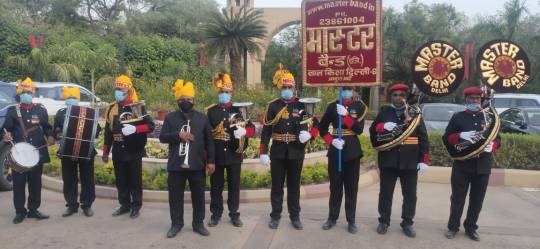
First on the list is the public’s most favorite and trusted wedding band- Master Band!
From Baggi to Doli to Ghodi, everything is available at this one-stop band. But lucky for you, the list does not just end here. They also provide premium services like photography, rose petal blasts, and even religious processions that will make your wedding stand out from the rest. With impressive packages and an amicable and punctual staff, this band is the first choice for every household.
2. The Chawla Band
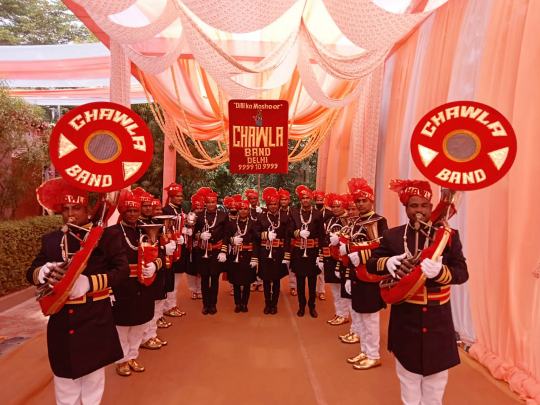
A close second is Chawla Band. Your wedding will be electrified by this "Dilli ka Mashoor" band. Since 2012, they have had the privilege of serving as the official band partner for the cricket team "Delhi Dare Devils" in the Indian Premier League. They have distinctive costumes and turbans that look fashionable when worn by the band, giving Baraat a regal appearance. There is no genre where anyone can compete with them, including instrumental music, Bollywood composition, Bhangra, pop, Shehnai, Tasha, and Dhol.
3. The Ashoka Band
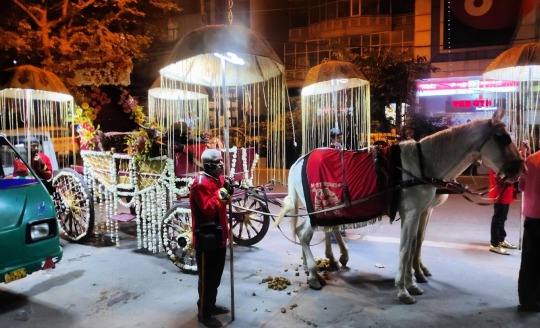
Third in line is the amazing Ashoka Band. They have everything you need for a noisy and extravagant wedding, including bands, chariots, ornamental lights, firecrackers, Punjabi Dhol and Bhangra groups, Shehnais, Tashas, and Nagadas. They are experts in presenting a brass band. They are the most reliable and committed band who will never fail you in front of your relatives and friends in terms of the playing. They are affordable yet impressive, and hence, a public favorite.
4. The Jagdish Prakash and Sons Band
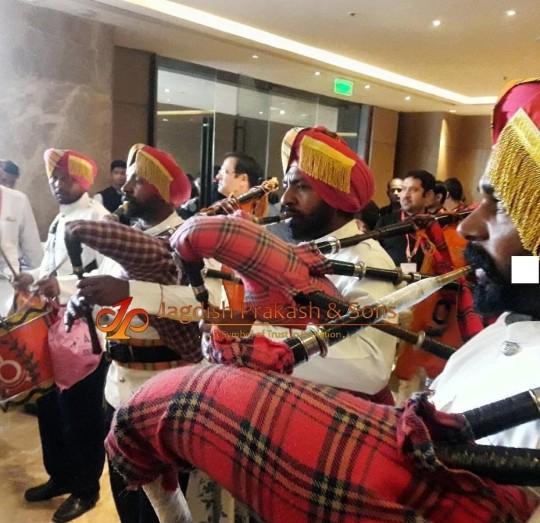
On the 4th is The Jagdish Prakash and Sons Band. They are knowledgeable about all forms of entertainment. They are the only ones of their sort, arranging for Gidda Dancers, Bhangra Group, Rajasthani Folk Dancers, Dandiya Nights, Western Dancers, Bollywood Dancers, and Haryanvi Dancers, and have a staff of 41 musicians. They also have Male-Female Singers, Sufi Singers, Gazal Night Singers, a Qawwali Group, Emcee, and many other performers to choose from in their organization.
5. The Sahib Band

Next on the list is a public favorite- Sahib Band. Established in 1994, it is one of the most well-known and prestigious band companies. Their stunning costumes have always drawn attention from both inside and outside of Delhi. They consistently enhance their offerings to meet the needs of the young dancers participating in wedding processions. Before arriving to play at your venue, they practice for a period which makes them the most asked-for band in the capital.
6. The A-One Samrat Band
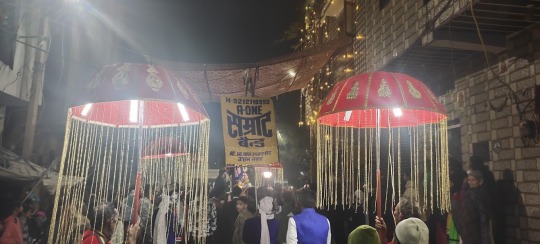
A-One Samrat Band provide a variety of services, ranging from lavishly embellished baggis that would make any groom look regal to trumpets, trombones, saxophones, clarinets, and other classic Indian fashionable leather/fiber-based rhythm instruments. Their main draw is the Jhumar lights. They usually wander through cities and villages dressed in their ostentatious attention-getting garb. They are regarded as having the most disciplined band members. As a result, their name is well-known.
7. The Shiv Mohan Band
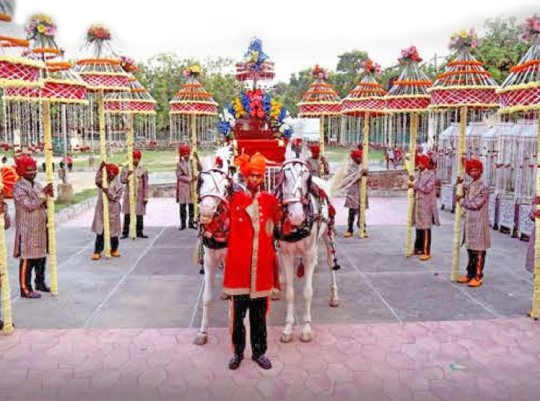
Shiv Mohan Band is the first and most well-known brass band in India that is both luxurious and trustworthy. They have years of experience performing at festivals, religious jules, wedding processions, and other events. The wedding band alternates between playing traditional and modern songs. To ensure that all of your guests can enjoy the show, their fire personnel take all necessary safety precautions. They have contacts with florists and can arrange for flower decorations as well.
This Karol Bagh, Delhi-based band expressly specializes in Cultural Dance, Doli, Ghodi, and Band services.
8. The Vikas Band

By fusing popular Indian melodies, pounding brass beats, and traditional folk music with general hallmark tunes from Bollywood, jazz, funky, pop, and even a hint of Indian classical music in partnership with the evocative sounds of the dhol, Vikas Band has created its unmatched charm. Many times, spectators have been in awe of the results of the vibrant blend of color, sound, and movement.
9. The Mahavira Band
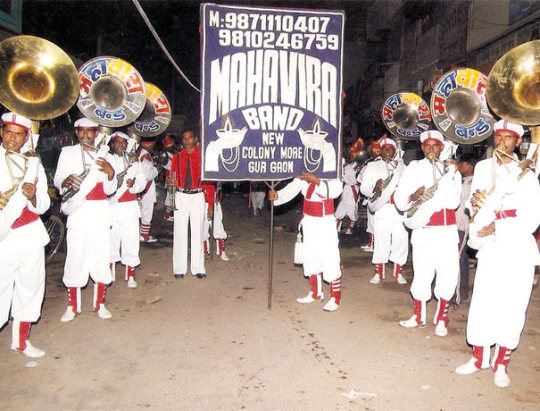
Mahavira Band specializes in tailoring the services based on the event and provides unmistakable illumination for it. They perform the most recent Bollywood hits, and the band is well-equipped with all the polished instruments, including saxophones, drums, banjos, flutes, synthesizers, and trumpets to play all of your favorite songs in the most melodic ways.
10. The Shri Sai Band
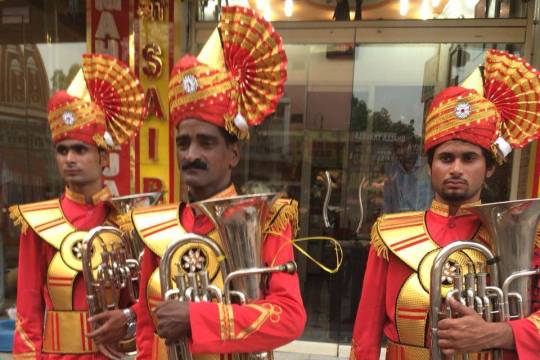
Being the most common wedding band, Shri Sai Band can provide its entire clientele with excellent work. They are an expertly run band that has been inspiring respect and pride in the band world for many years. According to client requests, their band's musicians perform both traditional and Western harmony.
Weddings are nothing less than a festival. And they deserve to be celebrated like a festival!
1 note
·
View note